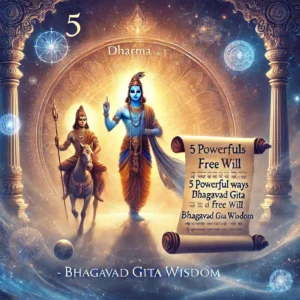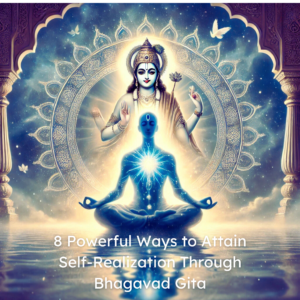4 Point Dharma and Karma Yoga
Dharma and Its Role in Karma Yoga – Understanding Your True Duty
Introduction
The concept of Dharma is central to the Bhagavad Gita. It means one’s righteous duty or moral responsibility. In Karma Yoga, understanding and following one’s Dharma is essential because right action without selfish motives leads to true success and spiritual growth.
This blog explores:
✅ What is Dharma according to the Bhagavad Gita?
✅ How Dharma and Karma Yoga are connected?
✅ How to discover and follow your true Dharma?
https://dayinspirehub.com/10-life-changing-teachings-from-the-bhagavad-gita/
1. What is Dharma in Bhagavad Gita?
📖 “It is better to follow one’s own Dharma imperfectly than to follow another’s Dharma perfectly.” (Bhagavad Gita 18.47)
Dharma is:
- The right path for an individual based on their nature, role, and responsibilities.
- The moral and ethical duty one must follow.
- A way to balance personal growth and social welfare.
✅ Example: A teacher’s Dharma is to educate and guide students, while a doctor’s Dharma is to heal and serve patients.
2. How Dharma and Karma Yoga Are Connected?
📖 “One who performs their duty with devotion, without attachment to results, attains liberation.” (Bhagavad Gita 3.19)
✅ Karma Yoga is about selfless action, but the action must align with one’s Dharma.
✅ Performing Dharma-based actions leads to spiritual progress.
✅ Ignoring one’s Dharma can lead to inner conflict and suffering.
✅ Example: Arjuna, in the Mahabharata, was a warrior. His Dharma was to fight for justice, even though he was emotionally troubled. Krishna advised him to follow his Dharma without attachment.
3. How to Discover Your True Dharma?
A. Self-Reflection and Inner Calling
📖 “The path of righteousness is different for each person, but it must be followed with faith.” (Bhagavad Gita 4.11)
✅ Ask yourself: What am I naturally good at? What brings me joy?
✅ Choose a path that helps both yourself and others.
B. Following Your Strengths and Nature (Swabhava)
📖 “One’s actions should be in harmony with their inner nature.” (Bhagavad Gita 3.33)
✅ If you love helping others, social work or teaching may be your Dharma.
✅ If you are disciplined and strong, leadership or protection roles (like a soldier or police officer) may be your Dharma.
C. Acting Without Attachment to Results
📖 “Perform your duty and leave the results to the Divine.” (Bhagavad Gita 2.47)
✅ Focus on effort, not rewards.
✅ Serve others with honesty and dedication.
4. Benefits of Following Your Dharma Through Karma Yoga
✅ Inner peace – No guilt or inner conflict.
✅ Success with satisfaction – Work becomes meaningful.
✅ Spiritual growth – Leads to self-realization.
✅ Positive impact on society – A righteous life benefits others.
Conclusion
Dharma is not just a religious concept—it’s about doing what’s right for you and society. When combined with Karma Yoga, it leads to a successful, fulfilling, and peaceful life.
By following your true Dharma, you align with the universal flow of life and contribute to a better world.




